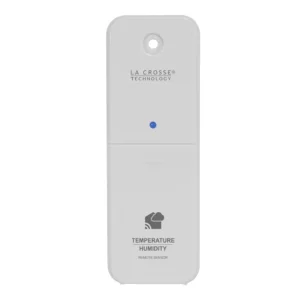
The High-Tech Crusader Helmet, with its iconic design and rich historical significance, has long been a symbol of medieval chivalry and warfare. This striking piece of armor not only protected knights in battle but also conveyed their status and allegiance. Today, advancements in technology have paved the way for the creation of high-tech versions of this legendary headgear. This article delves into the evolution of the Crusader helmet, the modern technologies integrated into its design, and its diverse applications across various fields.
Historical Context of the Crusader Helmet
Origins
The Crusader helmet, often referred to as the “Great Helm” or “Pot Helm,” emerged during the medieval period, particularly in the context of the Crusades (11th to 13th centuries). These helmets were designed to provide optimal protection in battle while allowing for a degree of visibility and ventilation. Made primarily of steel, they featured a rounded or conical shape to deflect blows and minimize injury. The design evolved over time, influenced by various cultures and combat styles encountered during the Crusades.
Symbolism
Beyond their practical use, these helmets also served as powerful symbols of faith, knighthood, and personal honor. Adorned with intricate engravings, crosses, crests, and other insignia, they represented the wearer’s allegiance to a cause and their commitment to the ideals of chivalry. The iconic shape of the Crusader helmet has endured through the centuries, inspiring countless adaptations in popular culture, including films, video games, and literature.
Modern Innovations
Materials
Today’s high-tech Crusader helmets leverage cutting-edge materials that enhance protection, durability, and comfort. Some of the most notable materials include:
- Carbon Fiber: This lightweight yet incredibly strong material offers superior impact resistance. Its use in helmet construction allows for a reduction in weight without sacrificing safety, making it easier for wearers to maintain agility and endurance during prolonged use.
- Kevlar: Widely known for its application in bulletproof vests, Kevlar provides exceptional protection against sharp and blunt force impacts. Its incorporation into helmet design helps to safeguard wearers against a variety of threats, from projectiles to melee weapons.
- Advanced Polymers: These materials can be engineered for specific properties, such as heat resistance, flexibility, and shock absorption. The use of advanced polymers ensures that modern helmets can withstand harsh conditions while maintaining structural integrity.
Integrated Technology
The modern Crusader helmet is not just a protective gear; it has transformed into a multifunctional piece of equipment. Key technological features include:
- Augmented Reality (AR): Equipped with AR visors, these helmets can overlay crucial information directly onto the wearer’s field of vision. This feature provides real-time data such as maps, enemy positions, tactical information, and vital statistics. The integration of AR technology enhances situational awareness, enabling users to make quicker, more informed decisions in high-pressure environments.
- Communication Systems: Built-in communication devices allow for seamless coordination between team members, enhancing situational awareness in combat scenarios. These systems often include noise-canceling microphones and secure channels to ensure clear communication even in chaotic conditions.
- Environmental Sensors: Modern helmets can include a suite of sensors that monitor environmental factors such as temperature, air quality, and even biometric data like heart rate and fatigue levels. This feature alerts the wearer to potential hazards, ensuring their safety during operations in diverse and unpredictable environments.
- Head-Up Displays (HUD): Some high-tech helmets integrate HUD technology, projecting vital information onto a transparent screen within the helmet’s visor. This allows users to access navigation data, mission briefings, and other essential information without diverting their attention from their surroundings.
Customization and Ergonomics
Advancements in manufacturing techniques, including 3D printing and computer-aided design, allow for personalized designs that enhance fit and comfort. Modern helmets can be customized to fit individual head shapes and sizes, ensuring a snug and secure fit. Ergonomic features, such as adjustable straps, padding, and ventilation systems, help to ensure that the helmet can be worn for extended periods without causing fatigue or discomfort. This attention to detail is critical for users who may need to wear their helmets for hours on end.
Applications Beyond the Battlefield
While the high-tech Crusader helmet is primarily designed with military applications in mind, its innovations have potential uses across a variety of fields, including:
- Law Enforcement: Officers in high-stakes environments can benefit from enhanced communication and situational awareness. The integration of AR technology and environmental sensors can help officers make informed decisions in rapidly changing scenarios, ultimately improving public safety.
- Search and Rescue: Rescuers operating in hazardous conditions, such as natural disasters or remote areas, could use AR technology to navigate challenging terrains and locate victims more efficiently. The ability to relay information back to command centers in real-time can significantly improve response times and coordination during emergencies.
- Sports and Recreation: Adventurous activities, such as mountain climbing, cycling, or extreme sports, could integrate similar helmets for safety and navigation. Features such as GPS tracking, heart rate monitoring, and environmental sensors can provide athletes with crucial data, enhancing both performance and safety.
- Industrial Applications: Workers in high-risk environments, such as construction sites or manufacturing plants, could utilize these advanced helmets to monitor conditions and improve safety protocols. Features like communication systems and environmental sensors can help prevent accidents and ensure that workers are aware of potential hazards.
Conclusion
The high-tech Crusader helmet represents a fascinating intersection of history and innovation. By merging traditional designs with modern technology, these helmets not only pay homage to the knights of yore but also pave the way for advancements in safety, communication, and situational awareness across various fields. As technology continues to evolve, the potential applications for such helmets are vast, promising an exciting future for headgear in both combat and civilian contexts. The blend of historical significance with modern functionality showcases humanity’s enduring quest for improvement and adaptation, making the high-tech Crusader helmet a remarkable example of how we can learn from the past while forging ahead into the future. Foe more detail please visit techwebinsights.com







